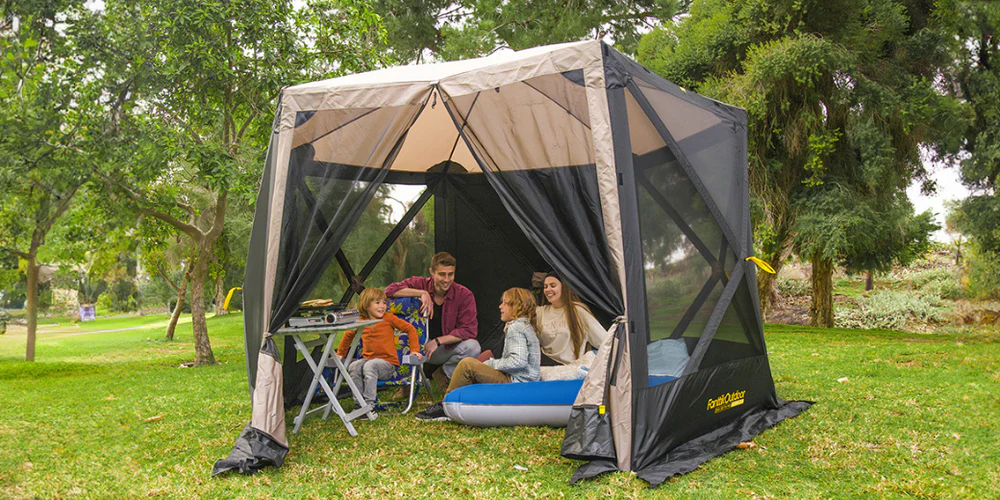Master the Art of Securing Your Canopy: Unleash Ultimate Stability and Safety!
Securing a canopy is crucial for ensuring stability and safety, particularly when faced with unpredictable weather conditions. Imagine planning a delightful outdoor event, only to be thwarted by a sudden gust of wind that sends your canopy tumbling across the yard. This scenario is all too common among those who underestimate the importance of proper anchoring. Without secure anchoring, canopies can easily topple, leading to potential injuries and damage. In this guide, we will explore the essential techniques and tools needed to anchor your canopy securely, giving you peace of mind for your gatherings, whether it be a picnic in the park or a backyard wedding.

Understanding the Basics of Canopy Anchoring
An anchor serves as a fundamental component in securing a canopy, providing the necessary stability to withstand various environmental challenges. Different types of canopies, such as pop-up tents, party tents, and frame tents, each have unique anchoring requirements. For instance, a lightweight pop-up tent may only need basic stakes, while a larger frame tent might require more robust anchoring solutions, such as sandbags or stakes driven deep into the ground. Understanding the specific needs of your canopy type is essential for effective anchoring, as it directly impacts its ability to remain stable in windy or rainy conditions. My friend once rented a large frame tent for her wedding, only to discover that the rental company had provided inadequate anchoring. Fortunately, we were able to reinforce it before the big day, ensuring a safe and beautiful celebration.
Essential Tools and Materials for Effective Anchoring
To anchor your canopy securely, you'll need a few essential tools and materials, each serving a specific purpose. Here’s a comprehensive list:
- Ground Stakes: Ideal for soft ground, these stakes are driven into the soil to hold the canopy in place.
- Sandbags: Useful for added weight, especially on hard surfaces like concrete or asphalt. They can also be used to supplement stakes in windy conditions.
- Ropes or Tie-downs: These help secure the canopy to the anchors, providing extra stability against wind.
- Hammer or Mallet: A necessary tool for driving stakes into the ground effectively.
- Canopy Weights: Typically made of heavy materials, these can be placed on the legs of the canopy to prevent it from lifting.
Having these tools ready before you set up your canopy will make the process smoother and more effective. During a family reunion last summer, we learned the hard way about the importance of sandbags when a sudden storm approached. We quickly filled our bags with sand, securing the canopy just in time to protect our gathering.
Step-by-Step Guide to Anchoring Your Canopy
Follow these steps to anchor your canopy securely, ensuring that it remains stable throughout your event:
- Choose the Right Location: Find a flat, stable area free from overhead obstructions such as branches or power lines.
- Set Up the Canopy Frame: Assemble the canopy frame according to the manufacturer's instructions, making sure all parts are connected securely.
- Attach the Canopy Cover: Drape the canopy cover over the frame and secure it in place, ensuring it fits snugly.
- Anchor with Stakes: For soft ground, drive ground stakes at a 45-degree angle away from the canopy legs. Make sure they are firmly in place.
- Use Sandbags on Hard Surfaces: If you’re setting up on concrete or asphalt, place sandbags on each leg of the canopy to provide weight and stability.
- Secure with Ropes: Tie down ropes to the canopy's anchor points, using tension to keep the canopy secure against wind. Attach the other end to a stable object or ground stake.
- Inspect and Adjust: Once everything is set, double-check the stability of the canopy. Adjust any loose ropes or weights as needed.
When my friends and I set up a canopy for a local fair, we encountered a mix of grass and concrete surfaces. We adapted our anchoring techniques by using both stakes and sandbags, which proved invaluable when a surprise gust of wind swept through. Our careful preparation kept the canopy standing strong, allowing us to enjoy the event without worry.
Common Mistakes to Avoid
Even seasoned canopy users can make mistakes during the anchoring process. Here are some common pitfalls to watch out for:
- Neglecting to Anchor Properly: Skipping anchors or relying on only one method can lead to instability.
- Using Inadequate Weights: Not using enough weight on hard surfaces can cause the canopy to lift or tip over.
- Ignoring Weather Conditions: Failing to consider wind direction and speed can result in dangerous situations.
- Overlooking Regular Checks: Not inspecting the anchors and canopy throughout the event can lead to unexpected failures.
During a camping trip with friends, we learned the hard way about the importance of securing our canopy against the wind. We had neglected to check the weather forecast, and a strong gust knocked our canopy down, causing a minor ruckus. Since then, we always make it a point to double-check our setup.
Maintenance Tips for Long-lasting Canopy Security
To ensure the ongoing stability and safety of your canopy, regular maintenance is essential. Here are some tips to keep in mind:
- Inspect Anchors Regularly: After each use, check the condition of your stakes, weights, and ropes for wear and tear.
- Clean the Canopy: Remove dirt and debris after each event to prolong the life of the fabric.
- Store Properly: When not in use, store the canopy and its components in a dry place to prevent mold and damage.
- Conduct Seasonal Checks: Before setting up for a new season, inspect your equipment thoroughly for any signs of damage or rust.
My family has a tradition of hosting an annual summer barbecue under our canopy. Each year, we make it a point to inspect our anchoring equipment and clean the canopy thoroughly. This routine has not only extended the life of our gear but has also given us peace of mind during our gatherings.
Ensuring Safe and Stable Events
In conclusion, properly anchoring your canopy is vital for ensuring safety and stability during any outdoor event. By understanding the basics of anchoring, utilizing the right tools, following a step-by-step guide, and avoiding common mistakes, you can secure your canopy effectively. Additionally, regular maintenance and seasonal checks will help prolong the life of your canopy and its anchors. With these techniques in mind, you're well-equipped to enjoy your outdoor gatherings without worry, knowing that your canopy is anchored securely. So go ahead, implement these strategies, and make your next event a success!








